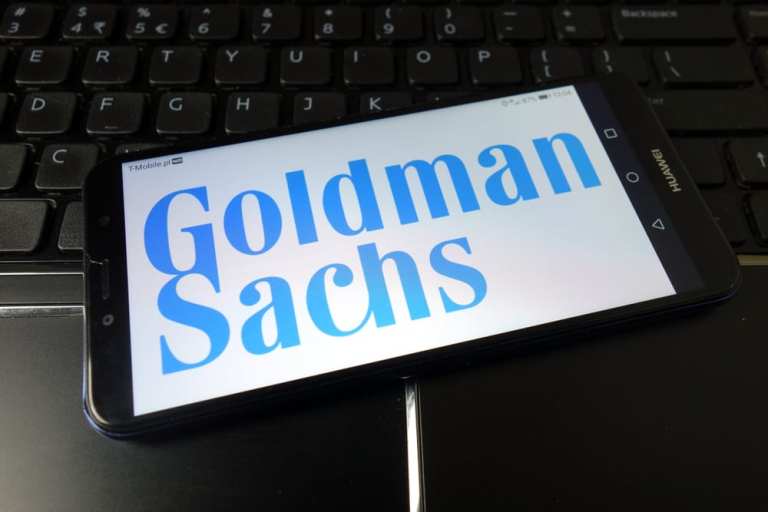Amazon, Goldman Have Lots To Gain From Their New Partnership

Small businesses hit hard by COVID-19 shutdowns are facing thin cash reserves, and the extension of credit to those SMBs has become an increasingly crowded field. The U.S. government, banks and Big Tech have all jumped into the ring to make financing more available, with the latest pair-up involving Amazon and Goldman Sachs. The two companies are teaming up to offer Amazon sellers up to $1 million in credit lines via Goldman’s Marcus brand.
The move comes out of Amazon’s initial effort to build a lending marketplace for its sellers, where many lenders would compete to make business credit offers, sources familiar with the situation told CNBC. However, that strategy was dropped in favor of working solely with Goldman, the sources said.
“Our team exists to fuel seller growth, period,” Ragui Selwanes, head of Amazon Lending, told CNBC. “Marcus is the right partner for us because they share this commitment.”
CNBC said enrollment in the program will be invitation-only, as Goldman will target specific sellers when offering Marcus’ services. Firms will apply via a two-step process; if accepted, they will receive funds at a 6.99 percent to 20.99 percent annual interest rate, the network reported. Businesses will be able to draw down or repay the money in much the same way as a standard business credit card works.
Amazon plans to offer the Marcus lines of credit alongside term loans that the online retailer has been offering for years. In some sense, the two products are now directly competing.
CNBC added that the partnership represents the first time Amazon has allowed a third-party financial institution (FI) to make underwriting decisions for its hundreds of thousands of Amazon Marketplace sellers. Historically, the report noted, the online giant has been known for keeping tight control on its SMB underwriting programs, preferring to combine in-house algorithms and closely guarded sales data to determine worthiness for a loan.
But the network said that Amazon and Goldman have collaborated at an increasing level in recent years, most notably on Amazon’s $13.7 billion acquisition of Whole Foods. Sources told CNBC that Amazon eventually opened up to the idea of bringing Goldman in on financing for Amazon Marketplace vendors, who now account for more than half of the total sales on the Amazon site.
“We’re super excited about embarking on this journey with Amazon, and thrilled that they chose to partner with us,” Omer Ismail, head of Goldman’s U.S. consumer business, told the network.
For Goldman, the move comes five months after CEO David Solomon said he wanted to see the Marcus brand become a “banking-as-a-service” provider for big corporations. Goldman has recently done big banking-as-a-service deals with Apple, JetBlue, Intuit and AARP, CNBC reported.
Goldman, which has historically been a bank for large institutional-investing firms, has also recently made a tardy but large entrance into retail financial services. The bank has built up $80 billion in deposits and has underwritten roughly $7 billion of loans over the past four years, according to CNBC.
Buttressed by big partnerships like the Amazon deal, it’s beginning to look like a competitive player as the COVID-19 pandemic has pushed consumers online and FinTech into the fast lane.
“On the one hand, we are a bank with a balance sheet, with the ability to lend and manage risk effectively,” Goldman’s Ismail told CNBC. “On the other hand, we’re doing this with all the benefits of being a startup, i.e., no legacy technology and no legacy business models.”
How effective the new Goldman/Amazon deal will end up remains to be seen. Offering financing to merchants certainly makes Amazon’s marketplace more desirable at a time when online retail outlets are springing up virtually by the hour.
Amazon is hot to retain its status as the premier site among them. Moreover, in the face of increasingly aggressive U.S. lawmakers accusing Amazon of antitrust violations, the firm has been particularly avid to point out that independent sellers account for the majority of sales on its site. Any move that Amazon can make to buttress its sellers – and demonstrate that it’s open to allowing third parties into its notoriously controlled ecosystem – will likely help.
As for Goldman, its consumer banking unit has picked up a lot of ground in the few years that it’s been around. It has gained customers, funds on deposit and big-name partnerships, albeit at a high cost. As of last fall, Goldman was reporting that it has lost approximately $1.3 billion on Marcus since the unit’s 2016 launch.
Marcus has answered the question as to whether or not it can become popular with the public. By partnering with Apple, and now Amazon, it has demonstrated that it can also catch big-name players’ attention.
But the question remains as to whether Marcus can find a way to do all of this profitably – and whether this latest partnership will allow it to start logging some numbers in the black. Only time will tell.